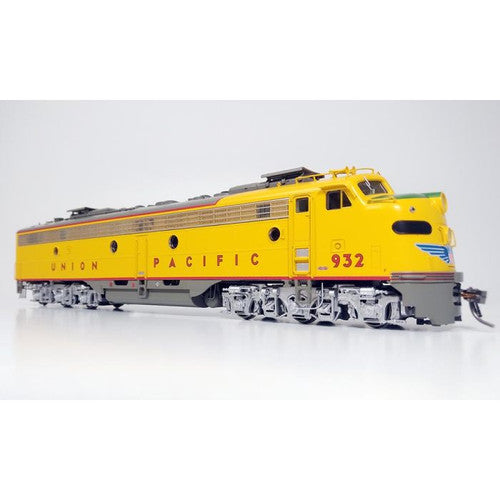Discover the Rapido HO scale model of the EMD E8 Union Pacific #942. This model, with colors of Armour Yellow, gray, and red, and featuring nose wings, offers an incredibly accurate representation. The E-8 and its successor, the E-9, were iconic North American passenger locomotives from the 1950s to the 1970s. They pulled passenger trains across the country and later formed the backbone of Amtrak's early fleet. Many were used in commuter service before retirement, and some now reside in museums and tourist railroads. What sets Rapido's E8 and E9 models apart is the precision. We commissioned a 3D laser scan of Union Pacific E8 #942 at the Southern California Railway Museum to ensure accurate nose, roof, and windshield contours. Our HO scale EMD E8A & E8B locomotives come with a host of amazing features. The 3D laser - scanned body shell provides unmatched accuracy. There are seven different noses, three different back ends, and two different sides. It offers various steam generator options, different fan and brake configurations, and single - or dual - headlight setups. The locomotives also feature a heavy die - cast chassis, a smooth - running drive system with all wheels powered, and complete lighting effects. We've included numerous road - specific detail parts in plastic and etched metal, such as different sand filler hatch styles, PRR Train Phone antenna, and UP snow shields.

Using your Rapido HO scale EMD E8 locomotive is easy. First, place it on a clean and smooth HO scale track. Make sure the track is properly connected and powered. Once powered, the locomotive will start moving smoothly thanks to its all - wheels - powered drive system. The complete lighting effects, like headlights and backup lights, will also turn on. When handling the locomotive, be gentle as it has many delicate road - specific detail parts. Avoid dropping or hitting it. For maintenance, regularly clean the wheels with a soft, dry cloth to ensure good electrical contact and smooth operation. If you notice any dust or dirt on the body shell, use a can of compressed air to blow it off. Don't use harsh chemicals on the locomotive as they can damage the paint and plastic parts. Keep it in a cool, dry place when not in use to prevent any damage from humidity or extreme temperatures.









